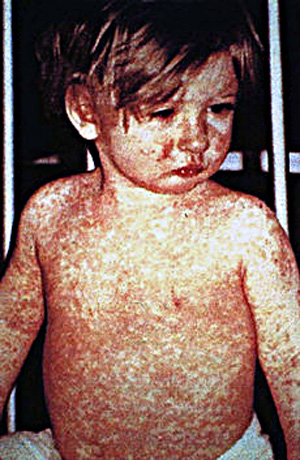A recent increase in whooping cough and measles in our province has a regional Medical Health Officer concerned and he is reminding parents to make sure their children are immunized so they are not at risk.
“The West Kootenays have had a surge of whooping cough cases in children over the last few weeks, following a large whooping cough outbreak there in 2010,” Dr. Rob Parker, Interior Health’s medical health officer, said in a statement released on Wednesday, August 21. “We have also seen measles activity this summer in the Lower Mainland, including the worrisome exposure of newborns in a hospital maternity ward in the Fraser Valley. The West Kootenays and the Fraser Valley have some of the lowest childhood immunization rates in the province.”
Both measles and whooping cough can spread quickly and easily among those who aren’t vaccinated. These infections can cause serious consequences for any child, but newborns and infants are at greatest risk. The best way to protect newborns and infants is through high vaccination rates — also known as herd immunity.

Measles (also known as morbilli, English measles, or rubeola — not to be confused with rubella) is an infection of the respiratory system caused by a virus, specifically a paramyxovirus of the genus Morbillivirus. Morbilliviruses, like other paramyxoviruses, are enveloped, single-stranded, negative-sense RNA viruses. Symptoms include fever, cough, runny nose, red eyes and generalized, maculopapular, erythematous rash.
Measles is spread through respiration (contact with fluids from an infected person’s nose and mouth, either directly or through aerosol transmission), and is highly contagious — 90% of people without immunity who are sharing living space with an infected person will catch it. An asymptomatic incubation period occurs nine to twelve days from initial exposure. The period of infectivity has not been definitively established, some saying it lasts from two to four days prior, until two to five days following the onset of the rash (i.e. four to nine days infectivity in total), whereas others say it lasts from two to four days prior until the complete disappearance of the rash.
There is no specific treatment for measles. Most patients with uncomplicated measles will recover with rest and supportive treatment. It is, however, important to seek medical advice if the patient becomes more unwell, as they may be developing complications. Complications may include bronchitis, acute encephalitis and – very rarely – panencephalitis, which is usually or always fatal.
Whooping cough, also known as pertussis, is a highly contagious bacterial disease

caused by Bordetella pertussis. In some countries, this disease is called the 100 days’ cough or cough of 100 days.
Symptoms are initially mild, and then develop into severe coughing fits, which produce the namesake high-pitched “whoop” sound in infected babies and children when they inhale air after coughing. The coughing stage lasts approximately six weeks before subsiding.
Prevention by vaccination is of primary importance given the seriousness of the disease in children. Although treatment is of little direct benefit to the person infected, antibiotics are recommended because they shorten the duration of infectiousness. It is estimated that the disease currently affects 48.5 million people yearly, resulting in nearly 295,000 deaths
“When a large percentage of a population is vaccinated, a disease can’t take hold,” Parker said. “When childhood immunization rates fall below 90 per cent we start losing the protection offered by herd immunity and this puts unimmunized children and newborns at increased risk. So, it is no surprise that we see recurrent outbreaks of communicable diseases in communities with the lowest immunization rates.”
Parker recommends that parents review all their children’s immunization records to make sure they are up to date with their shots before the new school year starts. You can find out what vaccine your child needs on ImmunizeBC at http://immunizebc.ca/vaccine-schedules.
“All parents want to do what is best to protect their families, so it is important for them to know that vaccines are safe and that the main side effects such as a sore arm or mild fever are minor and temporary,” he said. “It does take a village to raise and protect all children. Each parent immunizing their child protects not only them but their friends’ and neighbours’ children.”
BC’s comprehensive and publicly funded immunization program for children and adults protects against 16 illnesses. Vaccines can be obtained for free from your local public health centre. Several community pharmacies also offer vaccines for children ages five and older.
To learn more about immunizations, visit Immunize BC at http://immunizebc.ca/.



